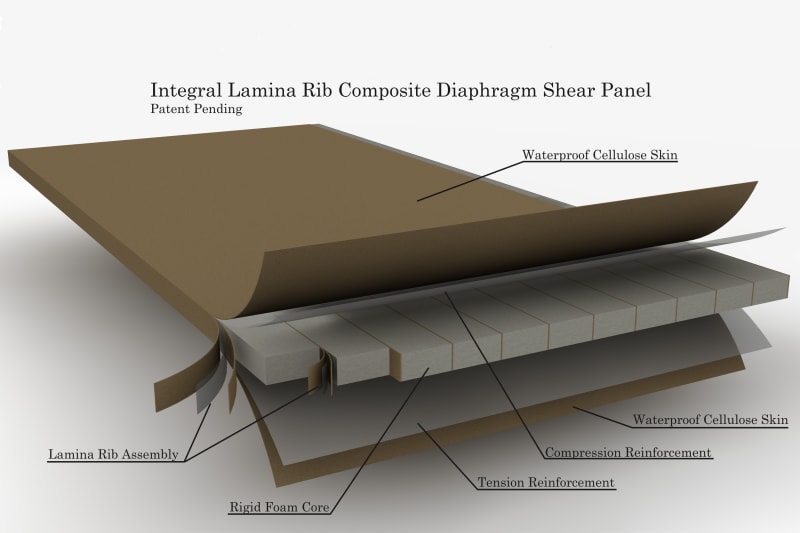Background
Today most all traditional structural floor, wall, and roof assembly materials are present in various forms that have been used individually or in combination with each other being categorized into the following basic categories:
1. Concrete
2. Masonry
3. Steel
4. Wood
Each of these main traditional building materials because of their properties has served a valuable function in the building process. However, used individually or in combination they carry with their use disadvantages in that each requires specific measures of protection in order to satisfy their structural benefit. A main disadvantage to these main building materials used either individually or in combination is that they require multiple protective assemblies to shield them from the effects of exposure to the environment. They also require additional thermal structure be attached or constructed alongside them to make the interior building envelope they surround fit for habitable occupancy. Due to increased pressure from environmental and energy concerns each of these materials is under scrutiny for having damaged or are damaging the environment and fragile eco-systems where buildings made with them are constructed. The ecological pressure imposed on these traditional building materials has also prompted legislative and industry-wide changes in manufacturing, assembly and disposal processes that has increased the cost to produce, distribute and assemble them making buildings constructed from them less affordable to the general public causing a decline in material quality in order to maintain affordability and market share in today's competitive economy.
This invention's advantage is that is has as its core constituent a continuous insulating material providing a sealed building envelope requiring no additional insulation type materials. It requires no additional protective material or assembly be attached too or reside alongside of it because it contains within its assembly all necessary constituent components to isolate a building's interior space from exterior environmental conditions making interior living space comfortable for habitation. Its reduced impact on the environment in both its embedded energy to produce its constituent components and its small ecological footprint because of its long term sustainability and low maintenance costs to the end user.
The integral composite lamina panel begins with a rigid foam core bun stock and acting as an internal stiffening and seperation component that when a singular width and length of the bun stock planer surface is surface coated with the composite lamina skin then cut, appositionally rotated and bonded a composite lamina plate rib is formed as an assembly and creates planer surfaces of exposed rigid foam core separating at an equal distance multiple composite laminar plate ribs which when constructed and bonded as an assembly with a resin bonding adhesive serves to form a reinforced composite lamina core assembly providing separated and opposed parallel width and length planer surfaces in which the composite lamina skin is applied forming the integral composite lamina panel.
Like this entry?
-
About the Entrant
- Name:Peter Anthony
- Type of entry:individual
- Software used for this entry:Sketchup
- Patent status:pending





